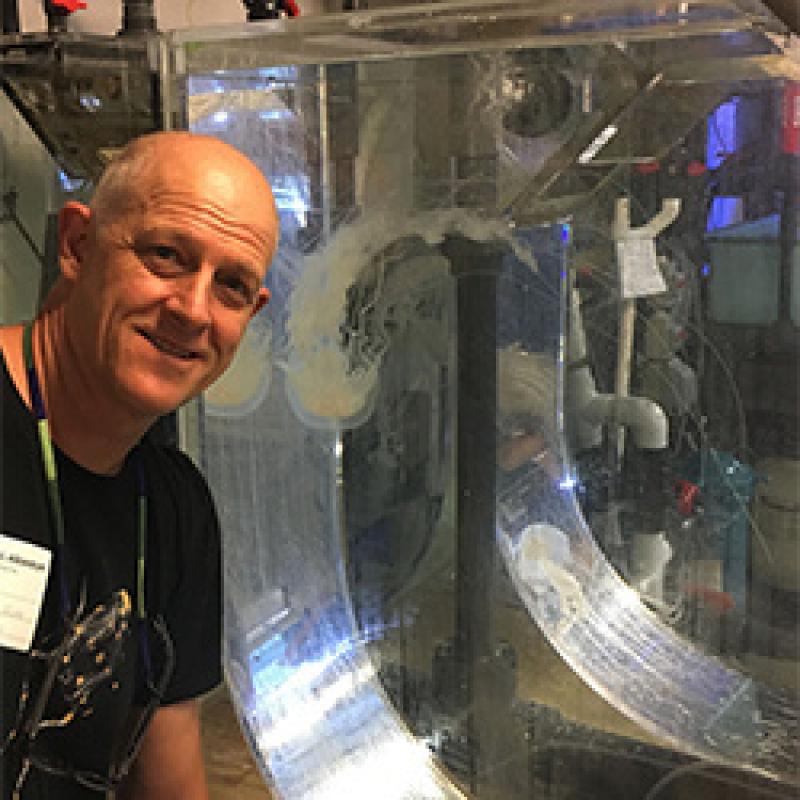Our Location
The NOAA National Systematics Laboratory is located at the Smithsonian Institution National Museum of Natural History in Washington, D.C. The Smithsonian's world class facilities, scientific resources, and collections are instrumental in supporting the Systematics Laboratory's research.
What We Do
Systematics is the study of biodiversity. It involves identifying, naming, describing, classifying, and determining the evolutionary relationships of organisms. Our work is fundamental to the mission of NOAA Fisheries, because better understanding marine species and how they interact with each other and their environment is an essential step toward ecosystem-based management. As such, the lab delivers basic information that is necessary to conserve, manage, protect, and restore marine ecosystems and living resources.
Marine Biodiversity
There are many species of marine organisms, and we currently know about a quarter-million distinct species that inhabit the marine realm; however, we estimate that we only know about 12 to 25 percent of all species on earth. Laboratories such as ours seek to continually discover and document new species to understand the magnitude of marine biodiversity.
Research
Four principle investigators conduct the majority of the lab's scientific research in collaboration with other NOAA science centers, visiting scientists, postdoctoral researchers, and graduate students.
Collections
The Smithsonian National Museum of Natural History's fish and marine mammal collections are the largest in the world, with an estimated 4 million and 10,000 specimens, respectively. The Museum's invertebrate collection is also world-renowned, with over 50 million specimens. NSL and Museum scientists partner to identify and catalogue specimens. Online catalogues are available for fish, marine mammal, and invertebrate specimens.
Education and Outreach
The NSL also partners with academic institutions to teach and mentor students. Scientists also regularly engage in public outreach programs through the Smithsonian Institution.
Bruce Collette, a renowned fish systematics expert with the lab since 1960 (and laboratory director 1982–1998), recently retired. In honor of his retirement, he established a $1 million Smithsonian endowment to support postdoctoral research in fish systematics.
Publications
NSL scientists publish approximately 15 to 20 peer-reviewed scientific journal articles each year. Some of their recent publications can be found here:
Our Leadership

Allen Collins, Ph.D.
Director, National Systematics Laboratory
Dr. Collins has been working with the NSL since 2004 and became director in 2016. His expertise is in jellyfishes and sponges, two groups of great ecological and economic importance. Jellyfishes can sometimes negatively impact fisheries and tourism, but also serve as important food sources for many turtle and fish species. Some jellyfish species are fished, with estimated average landings of more than 900,000 tons per year. Sponges provide habitat for many other marine species and have biomedical applications.
Management Team
NSL Personnel
-
- Katherine Bemis, Ph.D., Research Zoologist
-
- Tom Munroe, Ph.D., Research Zoologist (Flat Fishes)
-
- Martha Nizinski, Ph.D., Research Zoologist (Deep Reef Communities)
-
- Dan MacGuigan, Ph.D., Research Zoologist (Bioinformatics and Genomics)
-
- Abigail Reft, Ph.D., Museum Specialist (Research Support)
-
- Mike Vecchione, Ph.D., Research Zoologist (Squids and Octopuses)
-
-
National Systematics Laboratory
La’Shaun Willis, Museum Technician (Research and Admin Support)
-
National Systematics Laboratory
Our History
The NSL was established at the Smithsonian Institution in 1942 when the U.S. Department of the Interior’s Bureau of Fisheries (a precursor to the U.S. Fish and Wildlife Service) and Smithsonian merged their fish and marine mammal collections. In 1970, the laboratory was transferred from the Department of the Interior to NOAA in the U.S. Department of Commerce. In 2005, NOAA Fisheries and the National Museum of Natural History signed a memorandum of understanding, giving the NSL space and access to Museum facilities; funding programs; and support for research, education, and outreach. NSL scientists also serve as curators of some Smithsonian collections.
